Beyond Open Rates: What the Best B2B Email Marketing Companies in the US Measure in 2025
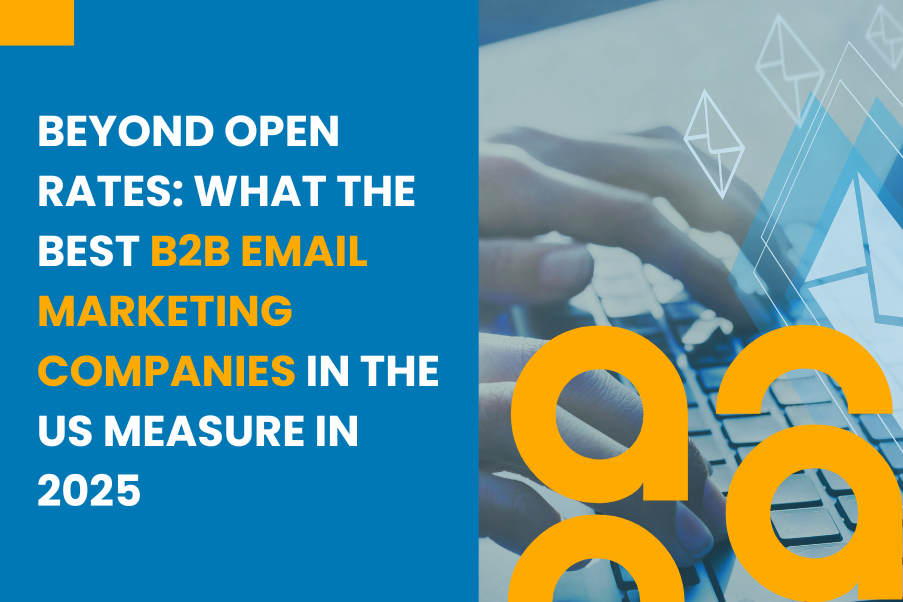
Introduction
You already know open rates no longer define email success. In 2025, b2b email marketing companies in the US are proving results through deeper engagement and measurable revenue impact. With privacy updates, changing buyer behavior, and higher ROI expectations, leaders are moving beyond vanity metrics. They now focus on what drives real growth: clicks, account activity, content engagement, and pipeline influence.
If you’re running B2B marketing in the US, you can’t afford to measure the wrong things. This blog shows you what the best companies focus on and how you can apply the same approach.
Why open rates no longer define success
Open rates once served as the benchmark for email performance. Marketers celebrated high opens as if they guaranteed revenue. But the reality is different.
Two changes reshaped how open rates are viewed:
- Privacy features in email clients now inflate or mask open data.
- An open does not equal intent; it is a surface-level action.
Consider this: email delivers an ROI of $36 for every $1 spent. But that return comes only when you measure actions tied to business outcomes, not vanity.
That is why leading b2b email marketing companies in the US no longer lean on open rates. They track what proves impact and moves deals forward.
What top companies measure in 2025
To prove value, the best firms report on metrics tied to revenue influence and buyer intent. Here are the ones that matter most.
Click-through rate and click-to-open rate
Clicks show action. The click-to-open rate (CTOR) reveals how many people engaged after opening. A campaign with average opens but strong CTOR signals meaningful interest.
In fact, segmented campaigns drive 50% more clicks than non-segmented ones. This reinforces a key point: relevance drives engagement.
By tracking CTR and CTOR, you identify which content resonates and where adjustments are needed. A solid b2b email marketing strategy always connects these numbers back to pipeline goals.
Account-level engagement
B2B decisions are rarely made alone. They involve buying groups, often five or more people. That is why account-level tracking matters.
For example, when multiple contacts in the same company open, click, and download resources, it signals collective interest. Top b2b email marketing companies in the US measure this activity to prioritize accounts for sales follow-up.
This is one of the clearest b2b email marketing examples of how engagement reveals opportunity readiness. It shifts the focus from single leads to accounts that are actively evaluating.
Pipeline influence and revenue impact
Executives care about the pipeline, not just lead counts. That is why leading providers show how email campaigns influence deals.
According to a report, 85% of marketers still track MQLs, but fewer than 30% of sales teams trust them. This disconnect makes revenue-based metrics essential.
Top b2b email marketing companies in the US now report:
- Opportunities created after email interactions.
- Closed deals influenced by campaigns.
- Time to conversion once email touchpoints occur.
This level of reporting proves that email is not just communication; it is a direct growth driver.
Funnel velocity and lead quality
Leads have a shelf life. If they move slowly through the funnel, they lose momentum. Funnel velocity measures how quickly prospects advance, while lead quality ensures the focus stays on opportunities, not empty numbers.
Many advanced providers track cost per opportunity (CPO) instead of cost per lead. This removes the illusion created by high lead counts and highlights true business value.
By adopting these practices, b2b email marketing companies in the US create reports that leadership can act on. These are practical b2b email marketing examples of how clarity in measurement supports smarter decisions.
Content consumption patterns
What happens after a click matters as much as the click itself. Are prospects reading blog posts? Downloading whitepapers? Watching product demos? These patterns reveal the buying stage and intent.
A prospect reading thought leadership may still be exploring. One downloading pricing sheets and case studies is closer to buying.
Smart b2b email campaigns use these signals to guide nurturing. By mapping content engagement, marketers deliver the right message at the right time. This remains one of the most consistent b2b email marketing best practices in 2025.
Replies, meetings, and direct outcomes
At the end of the day, the most valuable metrics are replies, booked meetings, and conversions. These are tangible proof of impact.
Leading companies design drip email marketing sequences to nurture responses step by step. They measure reply rates, track meetings set, and tie everything back to the pipeline. This approach creates the best b2b emails that do not just land in inboxes but move conversations forward.
Why this matters most in the US market
B2B buyers in the US expect relevance and proof of value. If your reports stop at opens and clicks, leadership will not be convinced. But when you present pipeline velocity, account engagement, and influenced revenue, you establish marketing as a partner in growth.
Here is a key stat: 77% of B2B buyers in the US prefer to be contacted by email. Email is the channel they trust. The opportunity is there, provided you measure it the right way.
That is why the best b2b email marketing companies in the US are winning. They connect campaigns to metrics executives care about and prove ROI with certainty.
How can you adopt this model
You do not need to be a large-scale provider to implement these practices. Here is how to bring them into your own marketing:
- Shift reporting to account-level engagement.
- Use attribution models to connect emails with pipeline creation.
- Replace cost per lead with cost per opportunity.
- Measure funnel velocity to identify slowdowns.
- Track reply and meeting rates as direct success signals.
- Map content consumption to funnel stages.
- Refine your b2b email marketing strategy with tests tied to revenue.
These steps move your program beyond activity tracking to business impact reporting.
B2B email marketing best practices that support this shift
Metrics gain meaning when paired with strong execution. That is why the best companies also emphasize b2b email marketing best practices, such as:
- Segmenting audiences by role, industry, and behavior.
- Personalizing subject lines and body content.
- Running drip email marketing sequences to nurture leads over time.
- Designing mobile-responsive templates for all devices.
- Continuously testing subject lines, calls to action, and timing.
- Aligning email content with larger campaigns and sales goals.
Together, these practices create the foundation for the best b2b emails. They combine engagement with precision, ensuring that email not only reaches inboxes but also drives action.
Final thoughts
Open rates no longer tell the full story. The best b2b email marketing companies in the US now measure engagement quality, account-level intent, funnel velocity, and revenue impact. They prove email’s role as a growth driver, not just a communication channel.
If you are still reporting opens and clicks as your main KPIs, it is time to evolve. Focus on what drives revenue, and you will build trust with leadership and alignment with sales.
At Almoh Media, we help agencies and B2B brands create email programs that deliver measurable business outcomes. Our strategies connect planning, execution, and reporting to show real pipeline impact. Ready to measure what truly matters?
Introduction
If you’re using content syndication, chances are you see it as just another way to get your content in front of more eyes. That’s fine, but there’s a lot more hidden beneath the surface. When you allow its full potential, content syndication ROI can surprise you, and it doesn’t take much to shift perception.
Let’s look at fresh data, outline a winning content syndication strategy, and show how U.S. B2B teams can get real value from it. Let’s begin!
What Is Content Syndication?
At its simplest, content syndication means sharing your B2B content: whitepapers, case studies, blogs on someone else’s site or network. This can be paid or free. You expand your reach, tap into new networks, and generate visibility, often reaching audiences you’d otherwise miss.
Why ROI From Content Syndication Deserves a Second Look
1. Huge lead production for relatively low spend
According to recent studies, the average cost per lead with content syndication is around $43. That’s far lower than other tactics, so even moderate conversion rates can offer solid returns.
2. Fast pipeline growth
Some platforms report that customers see 300–500% return on investment within three years. That’s not fluff – it’s real pipeline growth.
3. Verified conversion tracking methods
With UTM tagging and targeted vendor reports, U.S. marketers can track everything from initial syndication click to closed deal.
4. Built-in trust and positioning
Syndicating through known sites can give you indirect credibility, boosting brand awareness and authority without extra effort.
B2B Content Syndication Strategy: How to Do It Right
A good content syndication strategy starts long before content hits a third-party platform:
a). Pick assets that matter
Whitepapers, case studies, and long-form guides work best. They not only attract interest but also help establish your brand as industry-relevant.
b). Target lead quality, not rush volume
Instead of chasing clicks, target professionals. For example, top B2B firms average a 5.31% conversion rate on syndication offers.
c). Tag everything with UTM links
Measure traffic, engagement, bounce rates, and conversions back at your URL. This helps with syndication attribution.
d). Track core metrics
- CPL (cost per lead)
- MQL-to-SQL conversion rates
- Revenue per lead (use your average contract value)
e). Use the ROI formula
ROI= Revenue−Spend
Spend
For example, $1,000 spent → 50 high-quality leads → $5,000 average value = ($250k – $1k)/$1k = 249× ROI.
f). Optimize, rinse, repeat
Check what works by audience, site, and format. Then double down and drop what doesn’t.
Concrete U.S. ROI Stats You Can’t Ignore
| Metric | Statistics/Insight |
| Cost per lead | $43 average CPL |
| Syndication conversion rate | ~5.31% typical |
| Lead-to-deal conversion lift | 45% increase when focus is on quality |
| ROI over 3 years | 300%–500% reported |
| Projected industry growth | From $4.7 B in 2022 to $5.9 B by 2030 |
Content Syndication for Lead Gen: A Step‑by‑Step Plan
1. Define your ideal audience
Use buyer personas: titles, sectors, company size – so your content finds the right hands. This way, a sharper audience focus helps eliminate wasted spend and improves downstream lead quality.
2. Pick content with substance
Original research, how-to guides, competitive whitepapers – these both educate and convert. Plus, assets that solve specific problems tend to drive stronger engagement and more intent-driven leads.
3. Choose partners wisely
Use third-party platforms to reach U.S. B2B audiences. Look for those offering clear lead reporting and media kits. Before moving forward, ask for case studies or past performance metrics to make a more informed decision.
4. Structure campaigns with UTM tags
Make distinct tracking links for each partner and asset. This makes sure it’s easier to attribute leads, identify top performers, and compare ROI across channels.
5. Launch and monitor
Track CPL, CPL-to-SQL, cost per opportunity, pipeline driven, and revenue tied. At the same time, monitor activity in real-time to catch early trends and shift strategy fast if needed.
6. Review and refine monthly
Use metrics to shift spend toward top performers and tweak underperformers. As a result, consistent optimization keeps your syndication efforts aligned with revenue goals, not just vanity metrics.
How to Calculate Content Syndication ROI
- Calculate total spend (vendor fees + internal costs).
- Count total leads.
- Multiply leads by average deal size for potential revenue.
- Apply the ROI formula:
Revenue−Spend
Spend - Compare ROI over time to benchmark your initiatives.
This method is backed by multiple calculators and case studies.
Hidden Content Syndication Benefits
- SEO gains: Backlinks from quality sources can raise domain authority.
- Brand authority: Recognition on respected sites = credibility.
- Extended content life: A blog post can live on for months if syndicated well.
- Nurture acceleration: Leads from syndication are often further along in buying cycles.
Mistakes to Avoid and Fix Fast
Mistake: Only tracking clicks, not deals.
Fix: Tie every lead back to conversions with CRM integration. That way, you get a clearer picture of what’s actually driving revenue, not just traffic.
Mistake: Focusing only on cheap volume.
Fix: Go after quality; MQL-to-SQL rates matter most. Otherwise, your sales team will waste time on leads that won’t convert.
Mistake: Publishing irrelevant content.
Fix: Audit content – ensure tone, relevancy, and depth match syndication partner audiences. In doing so, you increase the chances of your content resonating with the right decision-makers.
Mistake: Not optimizing over time.
Fix: Regular performance review. Cut poor performers, boost winners. Over time, this helps improve ROI and keeps your content syndication strategy focused and results-driven.
Why Lead Quality Beats Volume
Not all leads are created equal. A smaller batch of high-intent leads can drive more revenue than a huge pool of low-interest ones.
Many B2B brands in the USA are shifting toward account- based syndication, where campaigns are matched to specific industries or companies. This helps improve conversion rates, shorten sales cycles, and increase customer lifetime value.
In short, prioritizing lead quality helps improve the long-term content syndication ROI, especially when targeting high-ticket accounts.
How AI Is Shaping the Future of Syndication
AI tools are starting to reshape content syndication strategy by analyzing behavior patterns and automating placements across high-performing channels.
With predictive scoring, marketers can now:
- Match content formats to individual user segments
- Forecast lead readiness using engagement scores
- Automate syndication at scale using content intent data
These innovations are raising the ceiling on what’s possible for B2B content syndication, especially for companies focused on measurable results.
About Almoh Media
Use metrics to shift spend toward top performers and tweak underperformers.
As a result, consistent optimization keeps your syndication efforts aligned with revenue goals, not just vanity metrics.
At Almoh Media, we specialize in high-impact content syndication for lead gen. We help B2B companies in the U.S. grow their pipelines by delivering:
- Verified lead generation from trusted channels
- Industry-specific targeting and campaign setup
- Transparent reporting tied to your sales funnel
- A proven strategy backed by real ROI
We understand the U.S. B2B buyer journey, and our syndication campaigns are built to generate demand, not just clicks.
Final Takeaway
Content syndication is an easy win if done smartly.
Focus on:
- Quality, not just volume
- Clear tracking and attribution
- Lead-to-deal conversions
- Continuous optimization
With $43 CPL, 5+ percent conversion, and long-term returns of 300–500%, most U.S. B2B teams can justify putting more budget behind it.
Ready to Get Real ROI from Content Syndication?
Let Almoh Media help you build a smarter lead-gen machine. We bring strategy, scale, and precision to content syndication – so your campaigns don’t just get seen; they convert. Reach out now to get started.
-
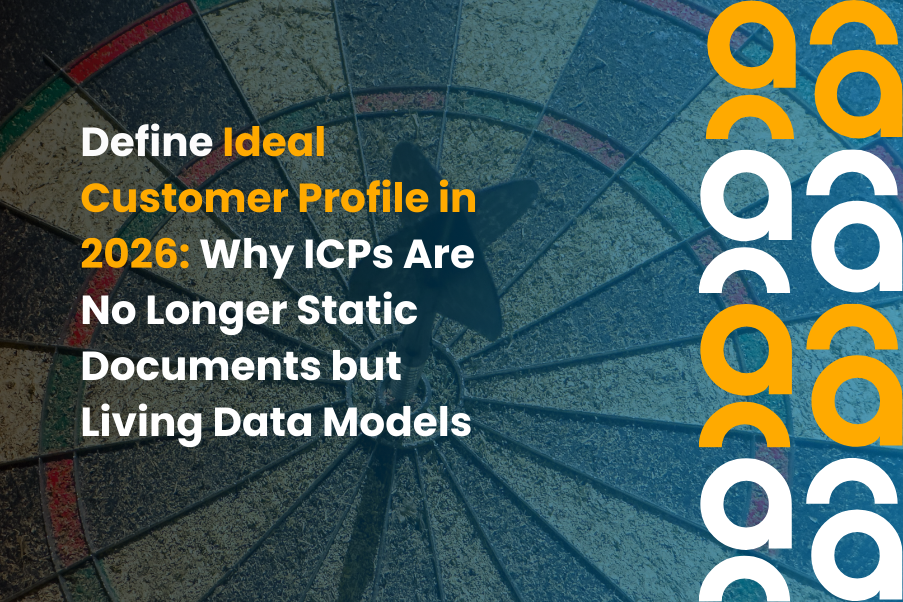 Define Ideal Customer Profile in 2026: Why ICPs Are No Longer Static Documents but Living Data Models
Define Ideal Customer Profile in 2026: Why ICPs Are No Longer Static Documents but Living Data Models -
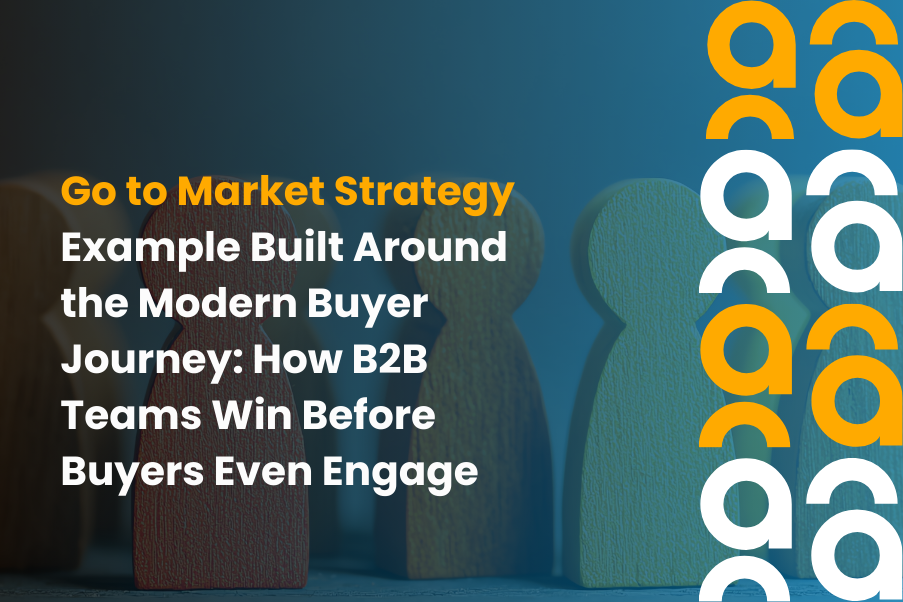 Go to Market Strategy Example Built Around the Modern Buyer Journey: How B2B Teams Win Before Buyers Even Engage
Go to Market Strategy Example Built Around the Modern Buyer Journey: How B2B Teams Win Before Buyers Even Engage -
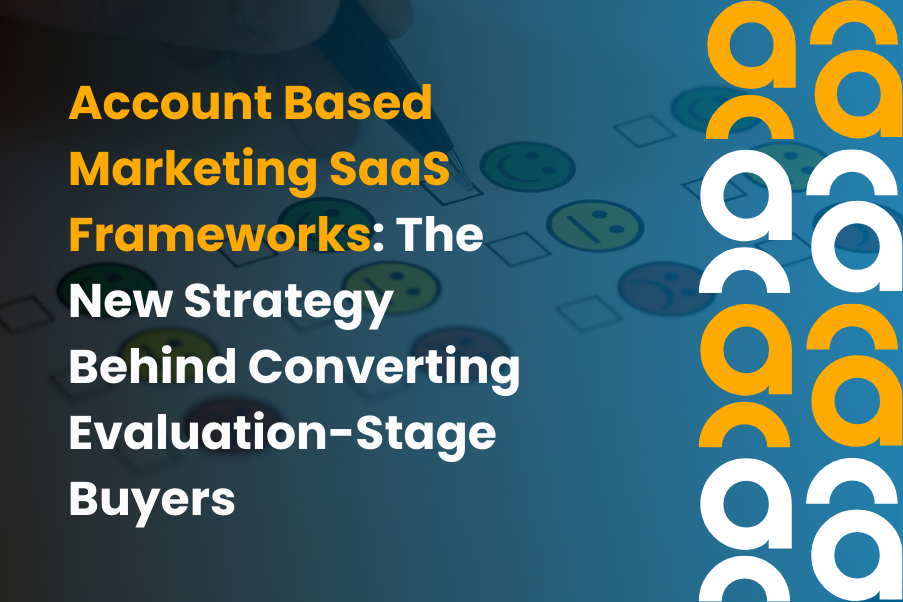 Account Based Marketing SaaS Frameworks: The New Strategy Behind Converting Evaluation-Stage Buyers
Account Based Marketing SaaS Frameworks: The New Strategy Behind Converting Evaluation-Stage Buyers -
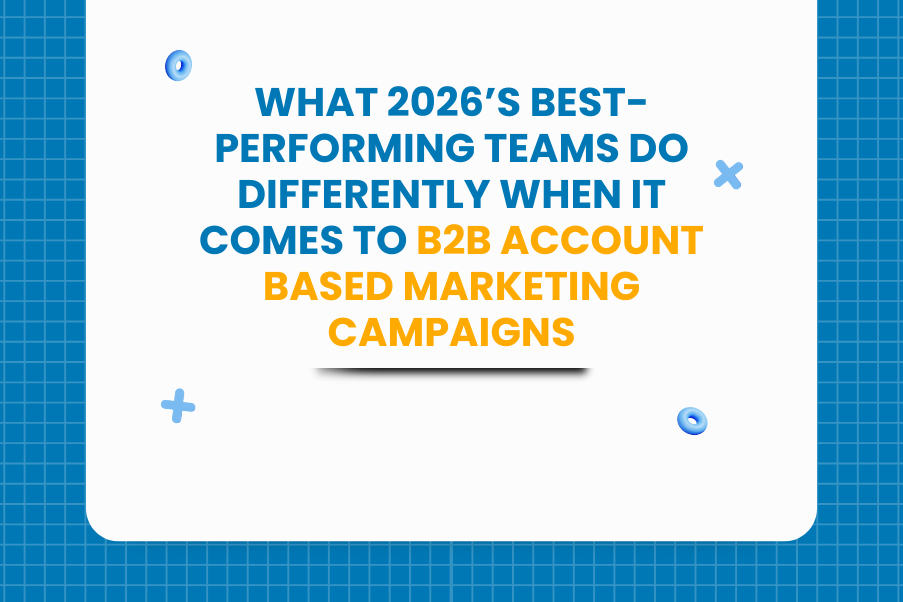 What 2026’s Best-Performing Teams Do Differently when it comes to B2B Account-Based Marketing Campaigns
What 2026’s Best-Performing Teams Do Differently when it comes to B2B Account-Based Marketing Campaigns -
 B2B Account Based Marketing in an Over-Messaged World: The Rise of Context-First Personalization
B2B Account Based Marketing in an Over-Messaged World: The Rise of Context-First Personalization

